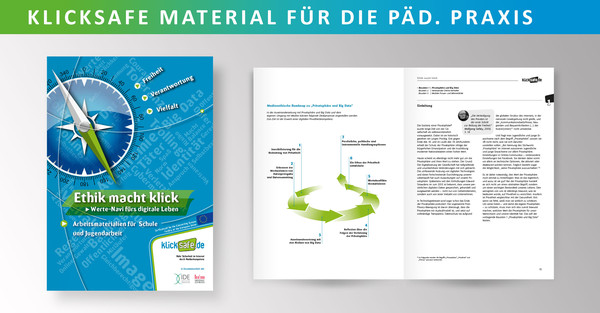Digital development has expanded the space in which people carry out conflicts. Cyberbullying, shitstorms and hate speech are different forms of violence perpetrated via online media. What all forms of online violence have in common, however, is that they damage a person's integrity and social reputation. It thus contradicts the dignity principle of our society. Media-based conflicts and acts of violence therefore essentially concern the ethical question of our values and life orientation: How do we want to live together?
Online violence is real violence
Online violence does not physically harm a person, but uses hurtful words, images or videos: It is a symbolic violence. Such attacks target a person's social standing or reputation - and thus his or her recognition as a subject in society.
Attacks and insults fundamentally harbor the danger of escalation, because their inherent provocation demands a reaction: they virtually want to be reciprocated by the offended person. This can set in motion an escalating dynamic.
The public nature of these forms of violence favors the emergence of escalative potential. Social networks, for example, greatly expand the circle of possible communicative connections: These can have an escalating effect if they are drawn into the conflicts.
Bystander - The Role of Helpers
There are different ways to more or less support hurtful online behavior. For example, by forwarding intimate videos, sharing an embarrassing picture, or liking a mean post on Facebook. Acts of violence are often group dynamic processes in which the bystander (viewer) plays an important role. The so-called bystander effect can negatively influence or even prevent helping behavior in a conflict situation. One explanation for this is that people are more likely to refrain from providing assistance if other people are present. With an increasing number of witnesses, the feeling of personal responsibility decreases and that of responsibility distribution increases.
Equally problematic is the view that the victim is to blame for the situation. This ultimately ignores the fact that people are fundamentally dependent on one another and assumes that everyone is the architect of their own good - or bad - luck.
In the sense of an ethics of responsibility, one is responsible as an autonomous subject not only for one's actions, but also for their omission. Omission, understood in this way, is a special case of immoral action: Instead of acting morally right, the person in question remains inactive, and precisely because of this he behaves wrongly.
Courage is also part of it
Responsible action ultimately also requires the ability to deal with conflict and courage. In the case of online violence, this means
- Helping the victim, even if it would be easier to look the other way.
- Being prepared to accept disadvantages up to a certain limit.
- speaking out against the insult and injury, even if the others find it funny or okay.
- to refer to one's own moral sense.
- to seek help from others whenever it is needed.
In addition to courage, however, there must also be wisdom in assessing a situation. First and foremost, the perspective of the victim and their level of hurt must be assessed.
How can we help?
Anyone who takes action against online infringement should also get support themselves: Otherwise, there is a risk of becoming a target of the attacks yourself - and in the process becoming isolated from your counterparts in a community. Supporters can be friends who show solidarity. But they can also be teachers who help as confidants. In chat forums, you can also get support from the moderators by asking them to intervene.


